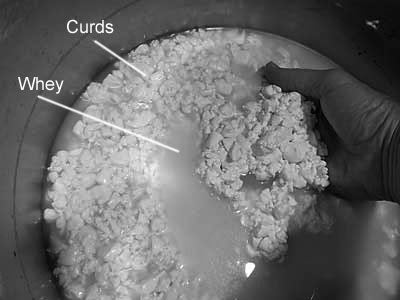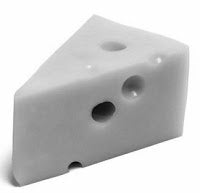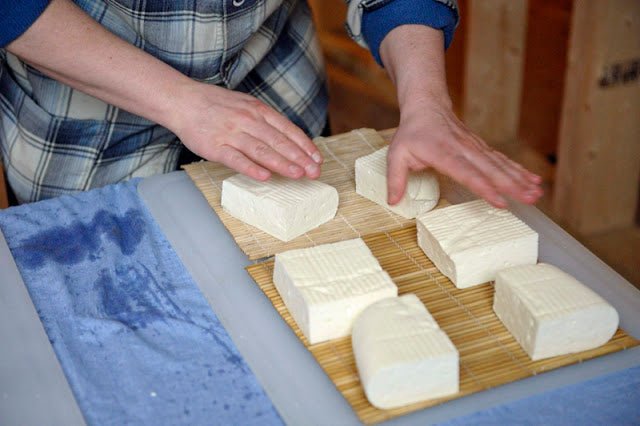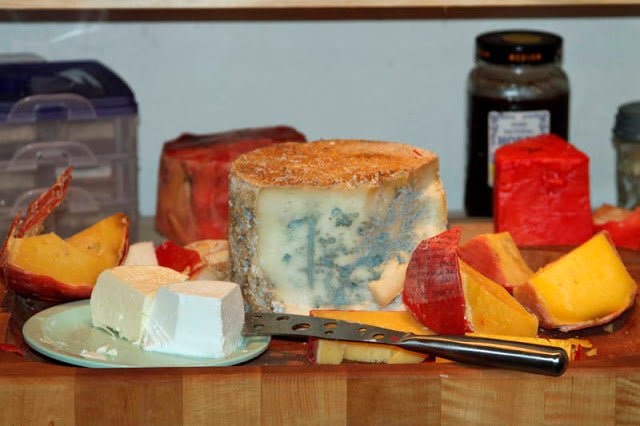Attention Beginners!
Many of you who are reading these blog articles have told me that you aren’t ready to make cheese. So, I’m wondering if the terms we use are unfamiliar and thus, well, scary. I found a great article by Debra Jacobs in which she provides some basic information for beginners. (There is a whole lot more at her website than I have used here.)
When I asked her for permission to use some of her info, she wrote back, “I have been making cheese off and on as a hobby since 1978 and enjoy it tremendously. I pretty much specialize in Italian cheeses but have made others as well. I have been trying to get people to try making cheese and many other foods for years!”
Making Cheese
By Debra Burelle Jacobs (AKA DeeJay)
http://www.deejayssmokepit.net/cheese.htm
So you’re thinking about making cheese eh? It’s actually pretty easy but like anything it has it’s own language. There are several terms used in the making of cheese that can be a bit confusing so maybe we should start by defining a few other terms here first ~
Cheese, according to Wikipedia, is a solid food made from the milk of cows, goats, sheep, and other mammals. Cheese is made by curdling milk using a combination of rennet (or rennet substitutes) and acidification. Bacteria acidify the milk and play a role in defining the texture and flavor of most cheeses. Some cheeses also feature molds, either on the outer rind or throughout.
Curdling, sometimes called coagulation, is the process by which a liquid, (in this case milk), changes to a thickened, curd-like, insoluble state by chemical reaction. So curdling is what makes the liquid milk become a cheese solid.
Curds are a dairy product obtained by curdling (coagulating) milk with rennet or an edible acidic substance such as lemon juice or vinegar and then draining off the liquid portion (called whey).
Whey, or milk plasma, is the liquid remaining after milk has been curdled and strained; it is a by-product of the manufacture of cheese or casein and has several commercial uses. Whey is used to produce ricotta and gjetost cheeses and many other products for human consumption. So don’t throw out your whey!
Rennet is a natural complex of enzymes produced in any mammalian stomach to digest the mother’s milk. Rennet contains a proteolytic enzyme (protease) that coagulates the milk, causing it to separate into solids (curds) and liquid (whey). The active enzyme in rennet is called rennin or chymosin, but there are also other important enzymes in it, e. g., pepsin or lipase. There are animal and vegetable rennets available. They also come in liquid and tablet form.
Acidification An acid is traditionally considered any chemical compound that, when dissolved in water, gives a solution with a pH less than 7.0.
Clean Break Once the milk has been inoculated and renneted, it will coagulate or thicken. A clean break is when you plunge a clean bent finger into the coagulated milk and lift your finger up and out cleanly. It will at first look like a pudding trying to stick to your finger, then it will just fall away cleanly leaving a small puddle of whey where your finger once was.
Cultures Cheese cultures are used to acidify the milk. There are several varieties of cultures which react differently with milk to adjust the pH. There are two basic categories of cultures:
1. Mesophilic Cultures – which are used for most soft cheeses and many hard cheeses that are not heated over 102F. The word ‘meso’ means middle and these cultures are used for cheeses where the recipe requires temperatures between 68°F and 102°F. (C101)
2. Thermophilic Cultures – which are ‘heat loving’ and these will do best for the higher temperature cheeses that require cooking to 104°F-128°F. (C201)
 |
| Photo courtesy of www.chickensintheroad.com |
Calcium Chloride This is used to improve curd size and texture when using store bought milk. (C14)
Citric Acid Used to increase acidity when necessary. (C13)
Tartaric Acid Used with light cream to make fresh Mascarpone dessert cheeses. (C19)
Flaked Cheese Salt Specialty grade additive free pure salt for seasoning cheese, canning, hot sauces and mustards. Enhances flavor, inhibits spoilage. (S1)
Lipase is an enzyme used to enhance the flavor of Italian and specialty type cheeses. It comes in several varieties like kid, calf and lamb lipase powders to produce that traditional Italian “Old World” flavor. This enzyme is a “must” when making some cheeses like Feta, Romano, Pecorino, and Parmesan.
Cheese Families Cheese is organized into families or categories by the way they are made. There are seven cheese families and this can help you decide what types of cheese you like and whether or not you might want to attempt this style of cheese.
This is a shortened version of cheese families provided (with permission) by: Professor Arthur R. Hill, Dept. of Food Science, University of Guelph, Canada (http://www.foodsci.uoguelph.ca/dairyedu/cheese2.html). We will be doing a separate article about these families with more information in each category soon.
Family 1. Acid-coagulated Fresh Cheese
Varieties: Cottage, Quark and Cream
Curing: Fresh cheese as the name implies is consumed fresh and has a shelf life of only 2 – 3 weeks.
Family 2. Rennet-coagulated Fresh Cheese
Varieties: Queso Blanco, Queso Fresco, Italian fresh cheese, Halloumi
Curing: Consumed fresh and has a shelf life of only 2 – 4 weeks.
Family 3. Heat-Acid Precipitated Cheese
Varieties: Ricotta (Italy), Channa and Paneer (India), some varieties of Latin American white cheese.
Curing: Heat-acid precipitated varieties are normally consumed fresh. An exception is Mizithra, a type of ricotta cheese which is cured, dried, and consumed as a grating cheese. It is also possible in some cases to hot pack heat-acid varieties to obtain extended shelf life. High concentrations of whey proteins decrease cheese meltability and account for the excellent cooking properties of heat-acid precipitated cheese.
Family 4. Soft-Ripened Cheese
Varieties: Feta, Camembert, Brie, Blue
Curing: 2 – 8 weeks.
Family 5. Semi-hard Washed Cheese
Varieties: This is the largest and most diverse group of cheese including Gouda, Edam, Colby, Brick, Montasio, Oka, Muenster and many others.
Curing: 2 weeks – 9 months.
Family 6. Hard Cheese: Low temperature
Varieties: Cheddar types and Pasta Filata. types. Cheddar and Pasta Filata manufacture are similar in the early stages. Pasta filata varieties are distinct in that they are worked and stretched in hot water and brine salted. Cheddar types are salted before hooping and pressing.
Curing: 1 – 36 months.
Family 7. Hard Cheese: High Temperature
Varieties: Romano, Parmesan, Swiss
Curing: 1 – 36 months.


























































































































































